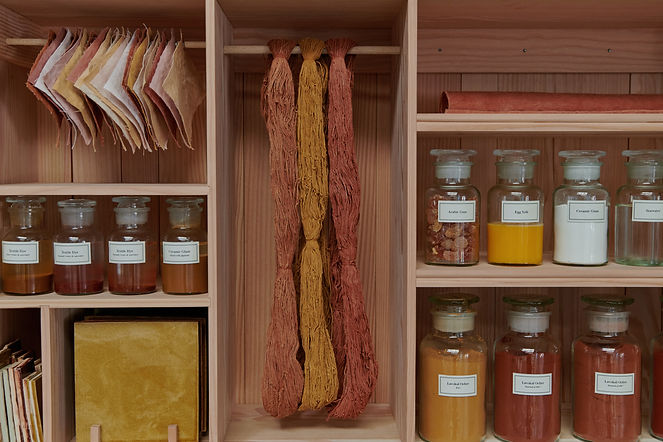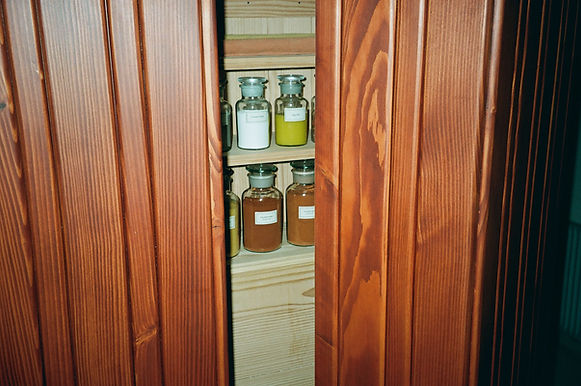
Title:
Year:
Material:
Løvskal Ochre
Exhibited
Photos
Collaboration
2024
Løvskal Ochre, linseed oil, Douglas wood, cotton, hemp and wool, ceramic
Linolie & Pigment
360, 3 days of design 2024
Niklas Adrian Vindelev
Description
For a long time, natural Ochre colors were a common pigment that was produced locally and used all over Denmark. Colors that represented our natural and cultural environment. In Løvskal, Jutland the largest Ochre deposit in Denmark can be found. In 20th century Løvskal, an open mine extracted and produced beautiful Danish Ochre colors. But since its closure in 1965 no Ochre pigment has been extracted or produced in Denmark. We can therefore no longer experience and apply Danish Ochre colors. Instead, we chemically produce or import pigment.
Løvskal Ochre aims to revive the understanding & application of Danish Ochre pigment. To do so, a cabinet containing tools, samples & artefacts is produced. A cabinet treated with linseed oil made from burned Løvskal Ochre. A cabinet that materializes Løvskal Ochre pigments & investigates 3 future applications of Løvskal Ochre; textile dyeing, ceramic glazing and linseed oil, produced in collaboration with Linolie & Pigment. Løvskal Ochre seeks to reconnect us to the cultural and natural origins of Danish Ochre. I hope the spectator of this project leaves with an expanded perception of color. A perception grounded not only in the hue of color but also in the origin, history, culture, craftsmanship and potential of Danish Ochre colors.
Linseed oil produced by Linolie & Pigment
Douglas wood sponsored by Dinesen.
The ochremine in Løvskal as it appeas in 2024. A place that once extracted and produced beautiful ochre pigment colors. A place that closed down in 1965 and thus bringing a final end to danish ochre pigment production.
For the last 3 years i have been going to Løvskal (dk) to visit, register and collect material for a revival of this natural source of color.
The mine today is almost invisible to the naked eye. The few remains consists of brick foundations and leftover ochre piles. The place, its material and its craft are at risk of being forgotton.
Thank you to the current owner Niels Jørn who has kept the memory of the ochremine alive, and provided me with lots of danish ochre over the years.








The cabinet was treated with pigmented oil made by Linolie & Pigment. The oil is the industrially produced oil with danish minerals pigment in over 60 years.


Experiments and tests were carried out to investigate Løvskal Ochres abillity to perform as a dyeing and printing agent for textiles.
In dyeing an old teqnique from Venice was applied. The ochre was mixed with seawater, the salt acting as a fixing agent for the pigment.


The ochre pigment can also be applied as a glaze within ceramics. Here the ochre is mixed with a a mineral glaze and when applied in different ratios, a varied range of tones and hues can be achieved.